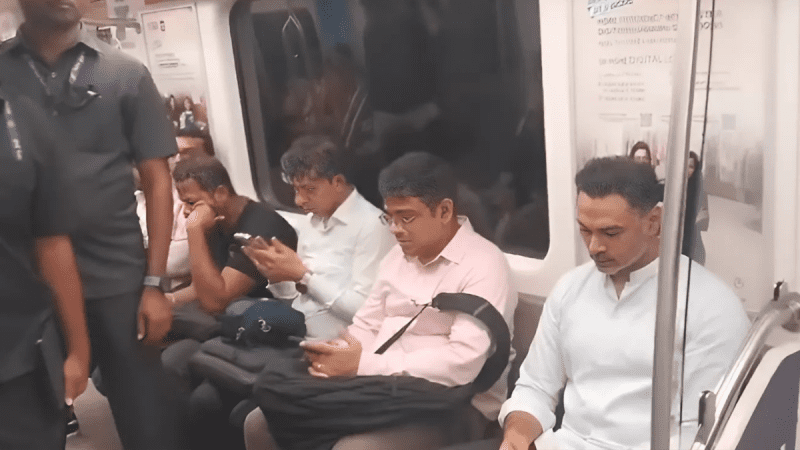On a rain-soaked day in Mumbai, Maharashtra’s Home Minister, Yogesh Kadam, chose practicality over protocol. As torrential rainfall caused widespread traffic jams across the city, the minister avoided the usual official convoy and instead travelled via Mumbai Metro Line 2A. His move, aimed at saving time and avoiding flooded roads, drew attention to the city’s evolving public transport solutions.
Mumbai Rains Bring Roads To A Standstill
Mumbai experienced sudden and intense rainfall, which disrupted routine travel and created severe congestion on key roads. Commuters faced waterlogging, vehicle breakdowns, and prolonged delays throughout the day. According to the Brihanmumbai Municipal Corporation (BMC), several low-lying areas reported flooding, contributing to the slow movement of traffic. The downpour not only impacted office-goers but also stalled emergency services in some pockets of the city.
In response to the worsening situation, Home Minister Yogesh Kadam opted to travel by Mumbai Metro, a move that allowed him to bypass the chaos on the streets. His decision aligned with the increasing reliance on urban rail networks by the public during monsoon disruptions.
Metro Line 2A Emerges As A Reliable Option
Metro Line 2A, which connects Dahisar East to DN Nagar, has become a vital link for suburban commuters. Operated by Mumbai Metro One Private Limited (MMOPL), the route has proven to be a dependable alternative during peak hours and adverse weather. On the day of the rains, the line ran as per schedule, unaffected by the weather-related delays that crippled road-based transport.
Also Read: Mumbai: IMD Forecasts More Rain, Thunderstorms As City Sees Its Coldest May Day Since 1951
As reported by The Times of India, many commuters also turned to the Metro that day, citing faster travel times and uninterrupted service. The minister’s decision to use the metro not only helped highlight its efficiency but also mirrored the growing confidence in Mumbai’s expanding metro network.
Interaction With Commuters And First-Hand Feedback
During his journey, Minister Kadam engaged with daily commuters, gaining insight into their everyday travel experiences. He asked questions about metro facilities, comfort, and the concerns passengers often face. This interaction provided him with a closer view of the city’s public transport challenges and successes.
According to LatestLY, passengers welcomed the minister’s presence and took the opportunity to share their feedback. His travel through the metro offered a chance for direct communication between the government and the public — a rare but meaningful initiative.
The minister’s decision to use the Mumbai Metro not only highlighted the city’s worsening rain-related traffic issues but also reinforced the importance of strengthening public transport infrastructure. With Mumbai’s metro lines expanding, more citizens — and leaders — are expected to embrace this faster and more sustainable mode of travel.
Cover Image Courtesy: @official_mmmocl / Instagram

